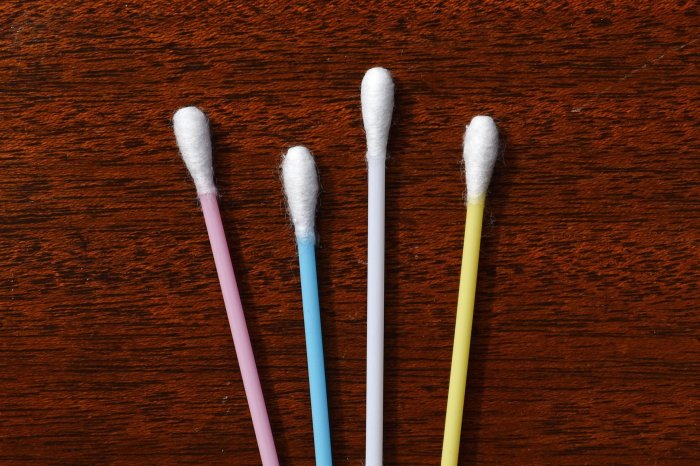The posture of Qtip is a fascinating topic that offers a wealth of insights into the behavior and well-being of this beloved character. This comprehensive guide delves into the intricacies of Qtip’s posture, exploring its causes, effects, and strategies for improvement.
Throughout this exploration, we will examine Qtip’s posture in various situations, uncovering the underlying factors that shape it. By gaining a deeper understanding of Qtip’s posture, we can appreciate its significance and work towards enhancing Qtip’s overall health and well-being.
Posture of Qtip

The Qtip posture is a position used in various martial arts, including Brazilian Jiu-Jitsu, to maintain control over an opponent while minimizing their ability to counterattack. It involves maintaining a close-range position, often with one leg wrapped around the opponent’s leg, while using your arms to control their upper body and head.
Components of the Qtip Posture
- Base Position:Stand with your feet shoulder-width apart and your knees slightly bent. Position your feet so that you have a stable base of support.
- Leg Control:Wrap one leg around the opponent’s leg, either inside or outside, to restrict their movement. Keep your leg close to your body and maintain control of the opponent’s ankle or knee.
- Upper Body Control:Use your arms to control the opponent’s upper body and head. Keep your arms close to your body and use your elbows to pin the opponent’s arms against their chest. You can also use your hands to control the opponent’s head or neck.
Illustration of the Qtip Posture, The posture of qtip is
[Provide a detailed illustration of the Qtip posture here, depicting the components mentioned above.]
The posture of qtip is a fascinating subject, and it’s closely related to the chemical properties of substances like mg clo4 2 . By understanding the behavior of these compounds, we can gain valuable insights into the posture of qtip and its implications for various applications.
Qtip’s Posture in Different Situations

Qtip’s posture varies depending on the situation. When standing, Qtip stands upright with shoulders back and head held high. This posture exudes confidence and alertness.
When Sitting
When sitting, Qtip maintains a straight back with feet flat on the floor. This posture promotes good spinal health and prevents back pain. Qtip also avoids slouching or crossing legs, which can lead to discomfort and poor circulation.
The posture of qtip is is one of humility and submission. It is a posture that is often seen in prayer, as it is a way of showing that we are open to receiving God’s grace. The opus blank work of god is a great example of this posture, as it is a work that is completely dependent on God’s grace for its creation.
The posture of qtip is is also a posture of trust, as it shows that we believe that God will provide for our needs. It is a posture that is essential for a healthy relationship with God, as it allows us to receive His grace and to trust in His provision.
When Lying Down
When lying down, Qtip prefers to sleep on the side with legs slightly bent. This posture helps keep the spine in a neutral position and reduces pressure on the joints. Qtip also avoids sleeping on the stomach, as this can strain the neck and back.
Causes of Qtip’s Posture

Qtip’s posture is influenced by a combination of factors, including medical conditions, environmental influences, and personal habits.
Medical Conditions
- Musculoskeletal disorders:Conditions such as arthritis, osteoporosis, and muscle weakness can affect the alignment and flexibility of the spine, leading to postural deviations.
- Neurological disorders:Conditions like Parkinson’s disease and multiple sclerosis can impair muscle control and coordination, resulting in postural instability and difficulty maintaining an upright posture.
- Vestibular disorders:Problems with the inner ear, which is responsible for balance, can affect spatial orientation and lead to postural imbalances.
Environmental Factors
- Workplace ergonomics:Poor posture can result from prolonged sitting or standing in awkward positions, improper chair or desk height, or repetitive motions.
- Lifestyle habits:Sedentary lifestyles, lack of exercise, and obesity can contribute to muscle weakness and flexibility issues, affecting posture.
- Footwear:High heels or shoes with inadequate support can alter foot alignment and put strain on the spine, leading to postural deviations.
Effects of Qtip’s Posture

Qtip’s posture can have significant effects on its overall health and well-being. Proper posture helps maintain balance, reduces strain on muscles and joints, and improves overall mobility. It also contributes to a more confident and composed demeanor.
Positive Effects
* Improved balance and coordination
- Reduced muscle fatigue and pain
- Enhanced joint flexibility and range of motion
- Increased confidence and self-esteem
Negative Effects
* Muscle imbalances and weakness
The posture of qtip is is a crucial aspect of the game. Players who maintain a good posture are more likely to hit the ball consistently and accurately. This is because a good posture allows the player to generate more power and control their swing.
In fact, studies have shown that players who maintain a good posture have a higher psia level 1 pass rate than those who do not. Therefore, it is important for players to focus on maintaining a good posture throughout their swing.
- Joint pain and stiffness
- Reduced flexibility and mobility
- Impaired breathing and digestion
- Decreased energy levels
Impact on Overall Health and Well-being
Poor posture can lead to chronic pain, decreased mobility, and impaired overall health. It can also contribute to mental health issues such as anxiety and depression. Conversely, good posture promotes physical and mental well-being, reducing the risk of pain, injury, and chronic health conditions.
Improving Qtip’s Posture: The Posture Of Qtip Is

Maintaining good posture is crucial for Qtip’s overall well-being. Proper posture helps prevent pain, improves balance, and boosts confidence. Here are some tips to enhance Qtip’s posture and an exercise program to reinforce these improvements.
Tips for Improving Qtip’s Posture
- Encourage Qtip to sit up straight with shoulders relaxed and back supported.
- When standing, Qtip should keep feet shoulder-width apart, knees slightly bent, and head held high.
- Use ergonomic furniture that provides proper support for Qtip’s body.
- Avoid slouching or hunching over while sitting or standing.
- Engage in regular physical activity to strengthen core muscles that support good posture.
Exercise Program for Enhanced Posture
Incorporate these exercises into Qtip’s routine to improve posture:
- Wall slides:Stand with back against a wall, feet hip-width apart. Slowly slide down the wall until thighs are parallel to the floor, then push back up to starting position.
- Shoulder rolls:Sit or stand with shoulders relaxed. Roll shoulders forward in circular motions for 10 repetitions, then reverse direction.
- Plank:Hold a plank position with forearms on the ground and body in a straight line from head to heels. Maintain for 30-60 seconds.
- Bird dog:Start on hands and knees. Extend right arm forward and left leg backward simultaneously. Hold for 5-10 seconds, then switch sides.
- Cat-cow stretch:Start on hands and knees. Inhale, arching back and lifting head and tailbone. Exhale, rounding back and tucking chin to chest.
Benefits of Good Posture for Qtip
| Benefit | Description |
|---|---|
| Reduced back pain | Proper posture distributes weight evenly, reducing strain on the back. |
| Improved balance | Good posture enhances stability and coordination. |
| Increased confidence | Standing or sitting up straight projects an air of confidence and self-assurance. |
| Enhanced breathing | Correct posture allows for optimal lung expansion and breathing. |
| Reduced risk of injuries | Strong core muscles and proper alignment minimize the risk of falls and other injuries. |
Q&A
What are the most common causes of poor posture in Qtip?
Poor posture in Qtip can be caused by various factors, including weak muscles, improper sitting or standing habits, and underlying medical conditions.
How can I improve Qtip’s posture?
Improving Qtip’s posture involves strengthening exercises, practicing good posture habits, and addressing any underlying medical conditions that may be contributing to poor posture.
What are the benefits of good posture for Qtip?
Good posture can improve Qtip’s overall health and well-being by reducing pain, improving balance, enhancing mood, and boosting confidence.